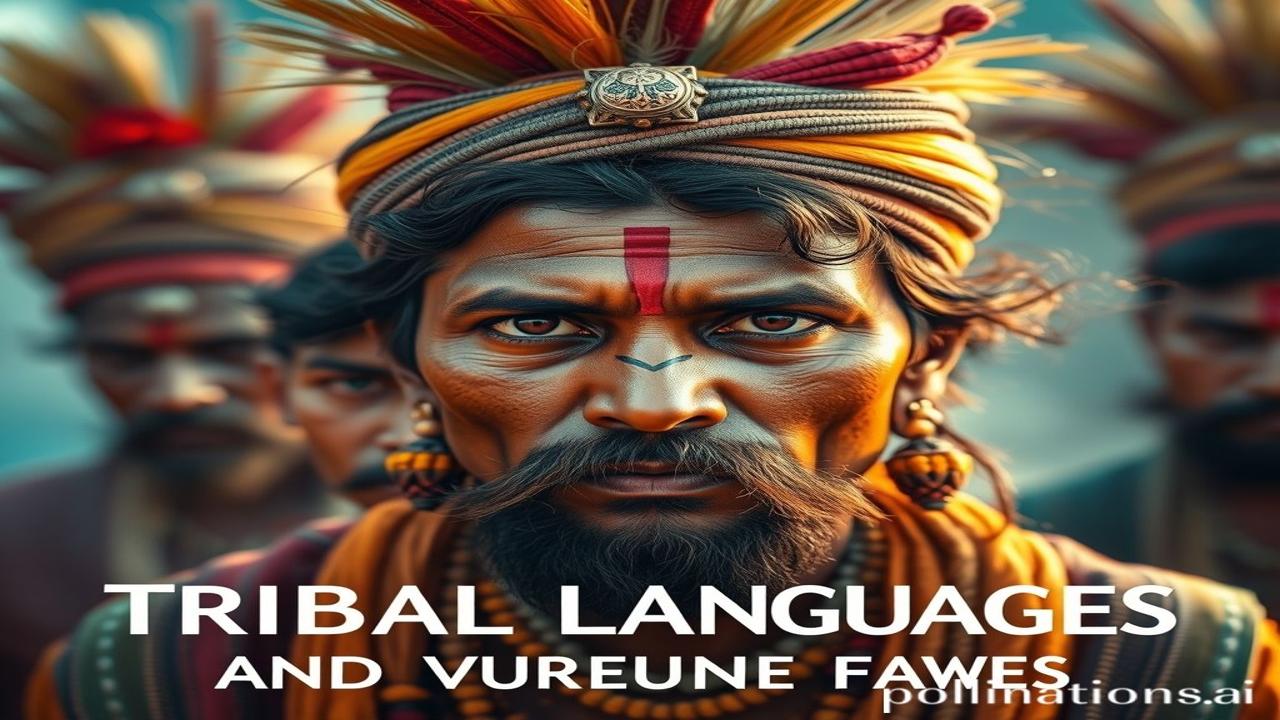Waqt Ke Panno Mein Chhipe Shabd: Unraveling the Magic of Tribal Languages
Kabhi socha hai, agar hum apne ancestor ke dreams ko sun sakte, toh woh kaisi awaaz mein humse baat karte? Imagine stepping into a world painted with rustling leaves, the scent of damp earth, and the distant echo of drums – a world where language is more than just words, it’s a living, breathing part of the landscape. This is the world of India’s tribal languages. They’re not just dialects; they are vibrant tapestries woven with ancient wisdom, unique perspectives, and untold stories. Let’s dive deep into this fascinating world!
Tribal Languages: A Glimpse Into India’s Linguistic Heartland
What exactly are we talking about when we say “tribal languages”? These are the languages spoken by the various Adivasi (tribal) communities across India. They represent a treasure trove of linguistic diversity, often pre-dating even the major Indo-Aryan and Dravidian language families.
Where did they come from? Many of these languages have their roots in the Austro-Asiatic, Tibeto-Burman, and Dravidian language families, showcasing migration patterns and cultural exchanges spanning millennia. They developed over centuries, deeply intertwined with the specific environments and cultural practices of each tribe.
Why are they important? Bhai, these languages are much more than just a means of communication. They hold the key to understanding ancient traditions, ecological knowledge, unique art forms, and the very essence of these communities’ identities. Their loss would be an irreparable cultural catastrophe. Think of it like losing a library filled with handwritten manuscripts documenting a civilization’s soul.
Zameeni Sach: Jivan Ki Dastaan, Shabd Ke Rang
Imagine living in a Gond village in Chhattisgarh. The air is thick with the scent of mahua flowers. You hear the rhythmic beat of the dhol, calling everyone to the Gotul (youth dormitory), where stories are shared in Gondi. These stories, passed down orally through generations, are not just entertainment; they are the history books, the moral compass, the very lifeblood of the community.
Ma Dhurki, the village elder, sits under the banyan tree, her wrinkled face etched with the wisdom of years. She speaks of the spirits of the forest, the importance of respecting nature, and the power of Bada Deo, the supreme deity. Every word she utters in Gondi is imbued with the spirit of her ancestors, carrying within it the hopes, fears, and dreams of her people.
Or picture a Santhal artist in Jharkhand, creating intricate Chadar Badar shadow puppets. Each character speaks in Santhali, bringing to life epic tales of heroism and sacrifice, reminding everyone of their shared heritage. In that moment, the language is not just spoken, it’s embodied, performed, and celebrated.
These languages aren’t simply bolchaal; they are living, breathing entities that shape the very way these communities perceive the world.
Dharohar aur Pehchan: Echoes of the Past, Whispers of the Future
Today, we see echoes of tribal languages in various aspects of Indian culture. Tribal art forms, music, and dance often incorporate linguistic elements, preserving the languages’ essence in creative expressions. Even in mainstream Indian languages, you might find words and phrases borrowed from tribal languages, evidence of a long and interconnected history.
But the real question is, are we doing enough to preserve these languages? In a world increasingly dominated by global languages, these smaller languages face the threat of extinction. Preserving them is not just about linguistic diversity; it’s about protecting the unique Bharatiyata that these communities contribute to our nation’s rich tapestry. It’s about acknowledging their contribution to the grand narrative of India.
Mazedaar Tathya ya Bhram-Bhanjak: Shocking Truths!
Log samajhte hain ki tribal languages are simply “backward” dialects. Lekin asli sach yeh hai ki many of these languages have highly complex grammatical structures and rich vocabularies, perfectly suited to their specific environments and cultural contexts. They are NOT inferior; they are simply different.
Did you know that some tribal languages have grammatical genders that don’t exist in Hindi or English? Or that some languages have elaborate systems of kinship terms that reflect the intricate social structures of their communities?
Drishya aur Bhavnayein: A Sensory Symphony
Imagine yourself walking through a tribal village at dawn. The air is cool and crisp, carrying the scent of woodsmoke and damp earth. The sounds of birds chirping blend with the gentle murmuring of the villagers as they begin their day. You see the colorful fabrics of their clothes, the intricate patterns of their tattoos, the warmth in their eyes as they greet you with open arms. Every sight, sound, and smell tells a story, a story woven in the fabric of their language.
The temple walls, carved with ancient symbols, feel rough and cool to the touch. The chants in their native tongue resonate with a deep, primal energy, connecting you to something ancient and profound.
Antim Vichar ya Uddharan: The Unheard Melodies
The loss of a language is like the burning of a library. It is a catastrophic event that robs us of irreplaceable knowledge and understanding. Let’s commit ourselves to preserving these linguistic treasures, not just for the sake of linguistic diversity, but for the sake of our shared humanity.
As the great Rabindranath Tagore once said, “Every child comes with the message that God is not yet discouraged of man.” Similarly, every tribal language carries the message that India’s story is still being written, and that its full potential is yet to be realized. Let’s ensure that these stories continue to be told for generations to come.
